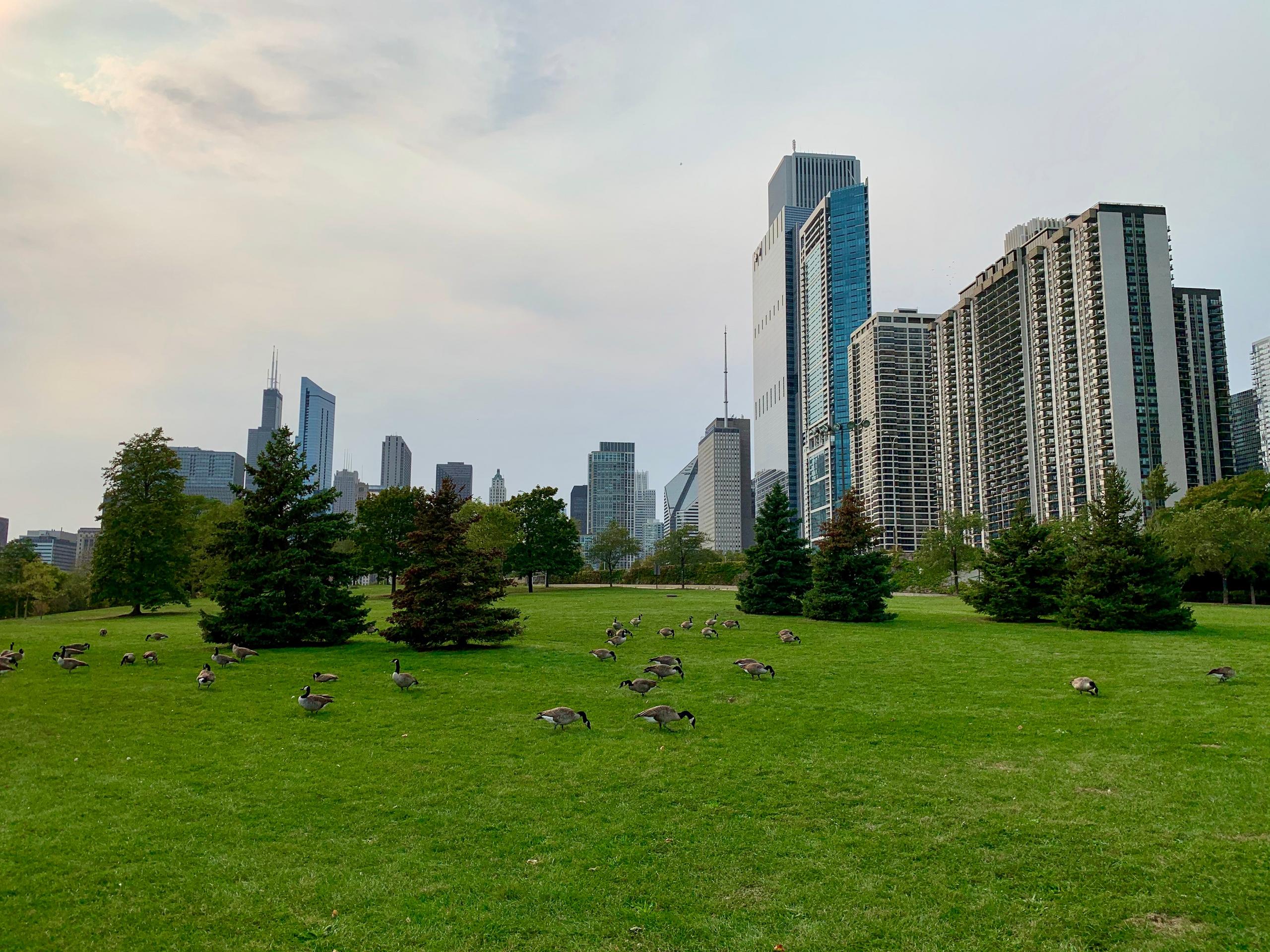whatever’s bugging you.
GEESE = MESS.
Wherever there are Canada geese, there are goose droppings. We encounter goose droppings on the beach, on golf courses and parks, on lawns and sidewalks. And it is their droppings that make so many despise these otherwise beautiful and harmless creatures.
While considered by many to be majestic creatures, Canada geese can become a serious problem for property owners when they appear in large numbers. These beautiful birds leave their droppings in the areas they congregate and, since an adult goose is able to produce as much as 1.5 pounds of feces in a single day, this can create a cleanup nightmare, among other issues!
Known Issues
- Damages Landscapes
- Spreads Illness
Active Seasons
- Summer
More About Geese
WHY HAVE CANADA GEESE CHOSEN MY LAWN?
These birds love to graze. They are primarily vegetarians who nibble on grass, grains, plants and produce, though they are known to eat fish and bugs as well. All your lawn needs to attract Canada geese is turf grass. This love of grass makes them a frustration for golf courses and recreation areas. And their love of fish makes them a problem for beaches and residents with beachfront property.
ARE CANADA GEESE DANGEROUS?
These are normally docile creatures, but they can become aggressive if they feel threatened. They are also territorial birds that will become aggressive when protecting a nesting area. Most often, a goose will do little more than give you a nibble with its beak, but that beak can do quite a bit of bruising to the soft skin of a human if one of these birds chooses to attack. While attacks are rare, and these animals usually don’t do much more than hiss, attacks do occur. It is never a good idea to provoke Canada geese. And, it is never a good idea to have these birds nesting on your property.
WHAT PROBLEMS DO CANADA GEESE PRESENT?
- Besides the frustrating cleanup, the droppings from Canada geese can also be a slipping hazard, and they also may contain infectious diseases, parasites, or harmful bacteria. The CDC connects geese to the following illnesses: E-coli, salmonella, cryptosporidium, giardia, toxoplasmosis, avian influenza, histoplasmosis, encephalitis, listeria, chlamydiosis, and more.
- Canada geese may bring chiggers onto your property, or create conditions for chiggers to thrive. Chiggers are a tiny mite that can leave itchy bites on the skin. These bites are often associated with pustules or blisters.
- Near airports, these birds can cause a danger to incoming and outgoing flights.
- These birds can destroy turf grass, flowerbeds, ornamentals, gardens, and crops with overgrazing. In an agricultural environment, they can damage many crops, including corn, wheat, rye, soybeans, clover, and vegetables. Their presence will also affect soil and sod, which can reduce the yield of crops.
- Canada geese can damage wetland habitats by trampling vegetation and eroding moist soil impoundments.
- They can become aggressive to humans and pets. While not a common occurrence, when a violent goose attack happens, the results can be startling.
WHAT ELSE DO I NEED TO KNOW ABOUT CANADA GEESE?
Some interesting facts:
- Canada geese don’t just live in Canada. These birds can be found throughout North America and in parts of Europe.
- Canada geese can eat vegetation under the water by sticking their head under the surface and dragging their bills across the bottom. They’ll also eat insects, fish, and other creatures they find.
- The bill of a Canada goose is also used for grooming.
- Geese sometimes make a honking noise in a similar way to how we sometimes use the horns on our automobiles. The noise is used to let the goose in front of them know that they are going too slow.
- When large numbers of Canada geese appear, they may only be resting between flights along their migratory route.
- Most Canada geese will follow the same migratory path their entire life.
- Canada geese sometimes fly in a V formation to reduce wind resistance and help the flock work together.

